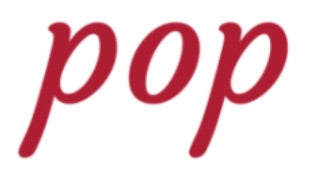How much does quality tea really cost?
Let's talk about numbers
Have you ever wondered how much of what you spend on tea ends up in the farmer's pockets?
Or what percentage of the price actually comes from the cultivation and processing of the leaves?
How much does Nannuoshan's tea cost?
More by accident than by choice, I found myself having become a tea merchant; these are the prices and costs of one of our most highly-valued teas:
25,70 €
11,18 €*
8,97 €
* including shipping from the country of origin, taxes and customs duties, laboratory tests
35% of the retail price ends up in the producer's pockets.
Profit margins
Nannuoshan buys tea directly from producers, without going through wholesalers, and sells it directly to private individuals, without intermediary retailers.
The difference of 14,52 €, however (25,70 € – 11,18 €), is not pure profit: with the 14 €, Nannuoshan pays rent on the teahouse, its employees, for trips to China to source tea, bills, the shipping included in the price, the commission on credit cards and PayPal, for management of our website, and so forth. The actual profit, after all costs and taxes, can be measured in cents, rather than Euro.
What about other teas?
Today, the average cost of 50g of Nannuoshan tea is 18 €, VAT included. Less expensive teas cost 8 €; the most expensive, 90 €.
The price of the tea at its origin varies tremendously; the finest tea at Nannuoshan costs more than a hundred times more than the cheapest. To make all of them accessible to consumers, we prefer to make less profit on the finer ones. Of the retail price before VAT, then, 10% goes to the producers for the most affordable teas, while for the most exclusive, they receive more than 50%.
How much does a large brand's tea cost?
By often receiving offers and price lists from European wholesalers, exchanging data and information with other merchants, and through direct contact with wholesalers and producers in the countries of origin, I also have fair perspective on the prices and costs of well-known brands, whose products are often found on supermarket shelves as well as tea boutiques.
Below, for example, is a "fine" tea for which I was able to reconstruct the costs. The first three prices come from reliable sources, and the latter two are my personal estimates. Prices and costs are all intentionally rounded to the first decimal place.
9,3 €
4,8 €
1,0 €
0,8 € [estimated]
0,64 € [estimated]
As you can see, less than 7% of the retail price ends up in the producer's pocket.
Profit margins
The difference between the retail price and the price from the producer is enormous, yet the profit is, in fact, quite limited. The large companies, victims and beneficiaries of the consumerist culture in which we live, invest a huge part of the proceeds in branding, marketing, and packaging; only a small amount, then, can be invested in the actual product.
And other teas?
In the world of Nannuoshan, there aren't any teas that cost 0,64 € / 50g from the producer. Even the cheapest teas are more expensive.
For the large brands, 0,64 € / 50g means a fine tea. And by 'large brands', I don't mean the multinational corporations which sell tea in sachets; such companies try to keep costs below 1 € / kg. The 'large brands' are specialized companies which sell only loose-leaf tea and are known for their quality on a national level.
Most of the tea sold by these specialized companies costs between 0,15 € and 0,50 € per 50g from the producer, and, for top-end teas, can reach up to 1,50 € / 50g.
What tea will we drink in the future?
Artisanal whole-leaf teas, harvested and processed by hand, have few buyers in the western world. They maintain a niche market, however small and exclusive, only in China and Japan, where many enthusiasts are ready to spend on quality tea as much as we spend on a bottle of wine.
But the consumption of fine tea in Europe is growing. We are still far from the market share of fine coffee, wine, and chocolate. But I hope that soon, as many people will spend 30 € for 50g of quality tea as do today on a good bottle of wine.
Written by Gabriele





